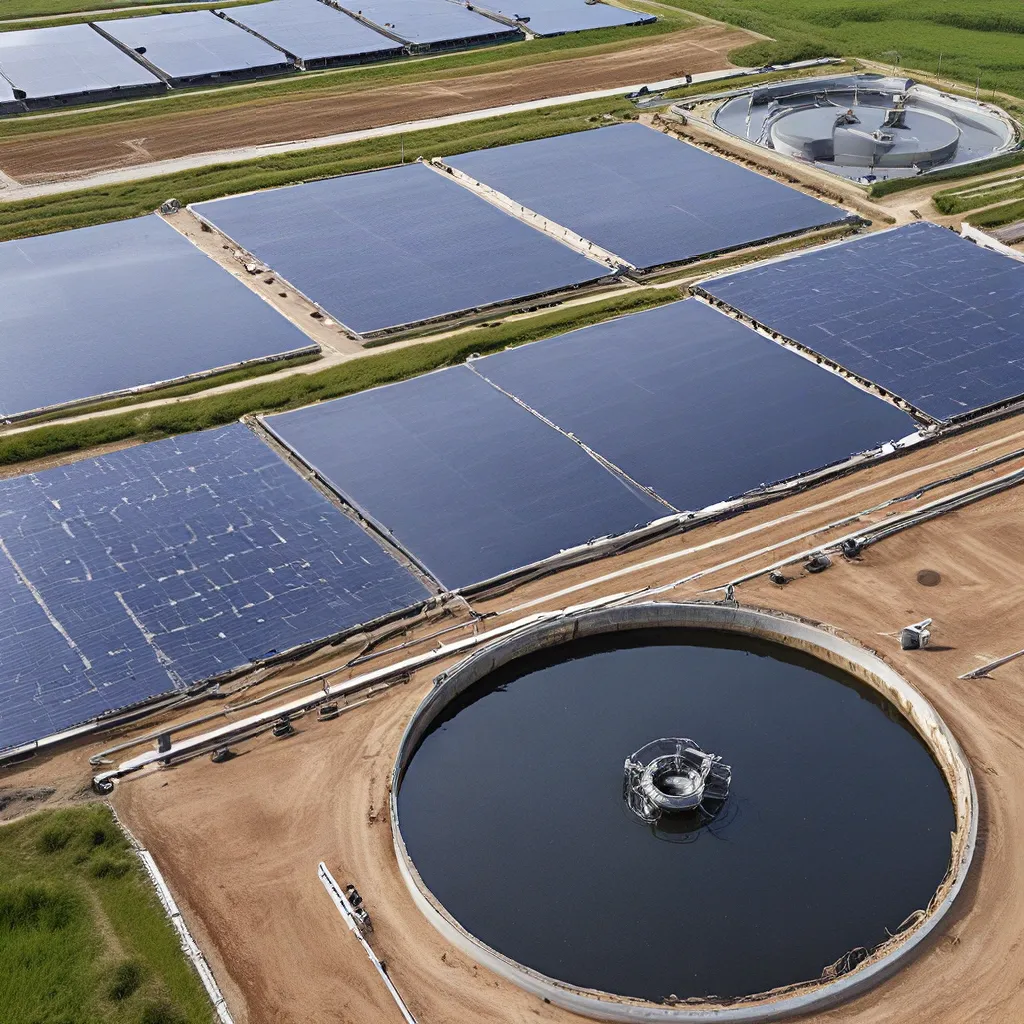
As someone passionate about sustainability and the environment, I’ve always been intrigued by the incredible potential of wastewater treatment facilities to harness renewable energy. These unsung heroes of the water infrastructure world don’t just clean our dirty water – they can actually become net producers of clean, green energy. It’s a truly remarkable feat, and one that I believe can have a profound impact on our collective efforts to combat climate change.
The Journey Towards Energy Neutrality
Let’s start with the basics – what exactly do I mean by “energy neutrality” in the context of wastewater treatment? Simply put, it’s the idea that these facilities can generate enough renewable energy on-site to fully power their own operations, essentially becoming self-sufficient and eliminating their reliance on the traditional grid. This is no easy feat, but the science and technology behind it is both fascinating and encouraging.
Research has shown that anaerobic digestion, a process where microorganisms break down organic matter in the absence of oxygen, can be a game-changer for wastewater treatment plants. By capturing the biogas produced during this process and using it to power generators, facilities can harness the inherent energy in the waste they’re already processing. This renewable energy can then be used to run everything from the pumps and aeration systems to the buildings and offices on-site. It’s a beautifully closed-loop system, with the potential to make these plants energy-positive – producing more energy than they consume.
But the journey towards energy neutrality doesn’t stop there. Leading companies are exploring even more innovative ways to leverage the unique resources found in wastewater, such as extracting valuable nutrients like phosphorus and nitrogen for use in fertilizers. Others are investigating methods to capture and store excess renewable energy generated during off-peak hours, ensuring a steady, reliable supply even when demand fluctuates.
Embracing the Circular Economy
As I dig deeper into this topic, I’m struck by how the concept of a circular economy – where waste becomes a resource – is so perfectly embodied by the wastewater industry. It’s a shift in mindset that moves us away from the traditional linear “take-make-waste” model and towards a more sustainable, regenerative approach.
Companies like Adidas have demonstrated the power of this circular mindset, setting ambitious targets to increase the use of recycled materials and expand their circular services. In a similar vein, forward-thinking wastewater facilities are recognizing the inherent value in the resources they manage, working to recover and reuse them rather than simply disposing of them.
This shift has the potential to yield enormous benefits – not just for the environment, but for the bottom line as well. By generating their own renewable energy and extracting valuable nutrients from the wastewater stream, these facilities can reduce operating costs, decrease their carbon footprint, and contribute to a more sustainable future. It’s a win-win-win scenario that I find incredibly inspiring.
Overcoming Challenges and Driving Innovation
Of course, achieving true energy neutrality and a fully circular wastewater system isn’t without its challenges. Adidas has highlighted the importance of working closely with suppliers to ensure alignment on sustainability goals and decarbonization efforts. Similarly, wastewater treatment plants will need to navigate complex technical, regulatory, and financial hurdles to bring their renewable energy and resource recovery plans to life.
But I’m optimistic that the ingenuity and determination of the industry will prevail. I’ve seen the way wastewater treatment service providers like Alpha Wastewater are constantly innovating, exploring new technologies and collaborating with researchers to push the boundaries of what’s possible. And as public awareness and demand for sustainable solutions continue to grow, I believe the financial and regulatory incentives will only become more favorable for these game-changing initiatives.
A Future Powered by Wastewater
As I reflect on all that I’ve learned, I can’t help but feel a sense of excitement and optimism about the future of wastewater treatment. These unsung heroes of the water infrastructure world are poised to play a critical role in our transition to a more sustainable, circular economy. By harnessing the incredible renewable energy potential of the waste they manage, and extracting and reusing the valuable resources within, they can become net producers of clean, green energy – a truly remarkable feat.
Of course, the path ahead isn’t without its challenges, but I’m confident that the ingenuity, determination, and collaborative spirit of the industry will propel us forward. As we continue to push the boundaries of what’s possible, I believe we’ll see more and more wastewater treatment facilities achieving energy neutrality and beyond, serving as shining examples of what can be achieved when we embrace the power of a circular mindset.
So, the next time you flush the toilet or turn on the tap, take a moment to appreciate the incredible work happening behind the scenes at your local wastewater treatment plant. They may not be the most glamorous part of our infrastructure, but they’re quietly revolutionizing the way we think about waste, energy, and sustainability. And that, to me, is nothing short of inspiring.